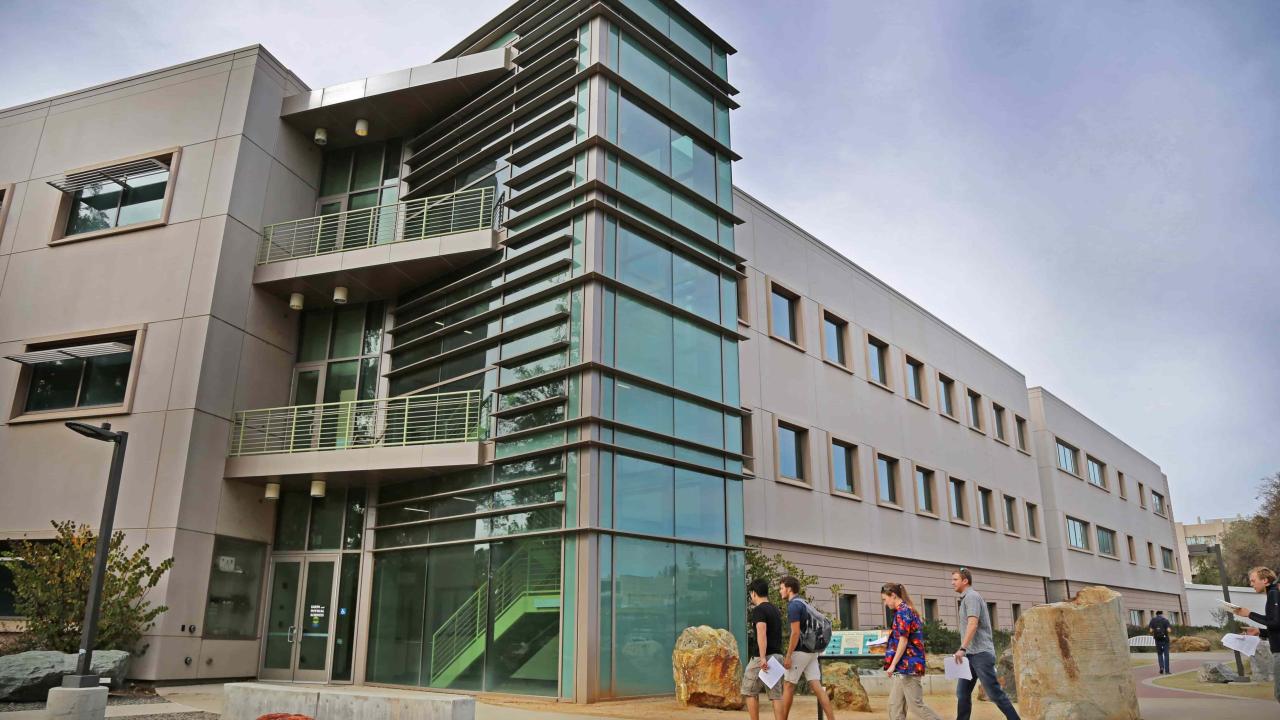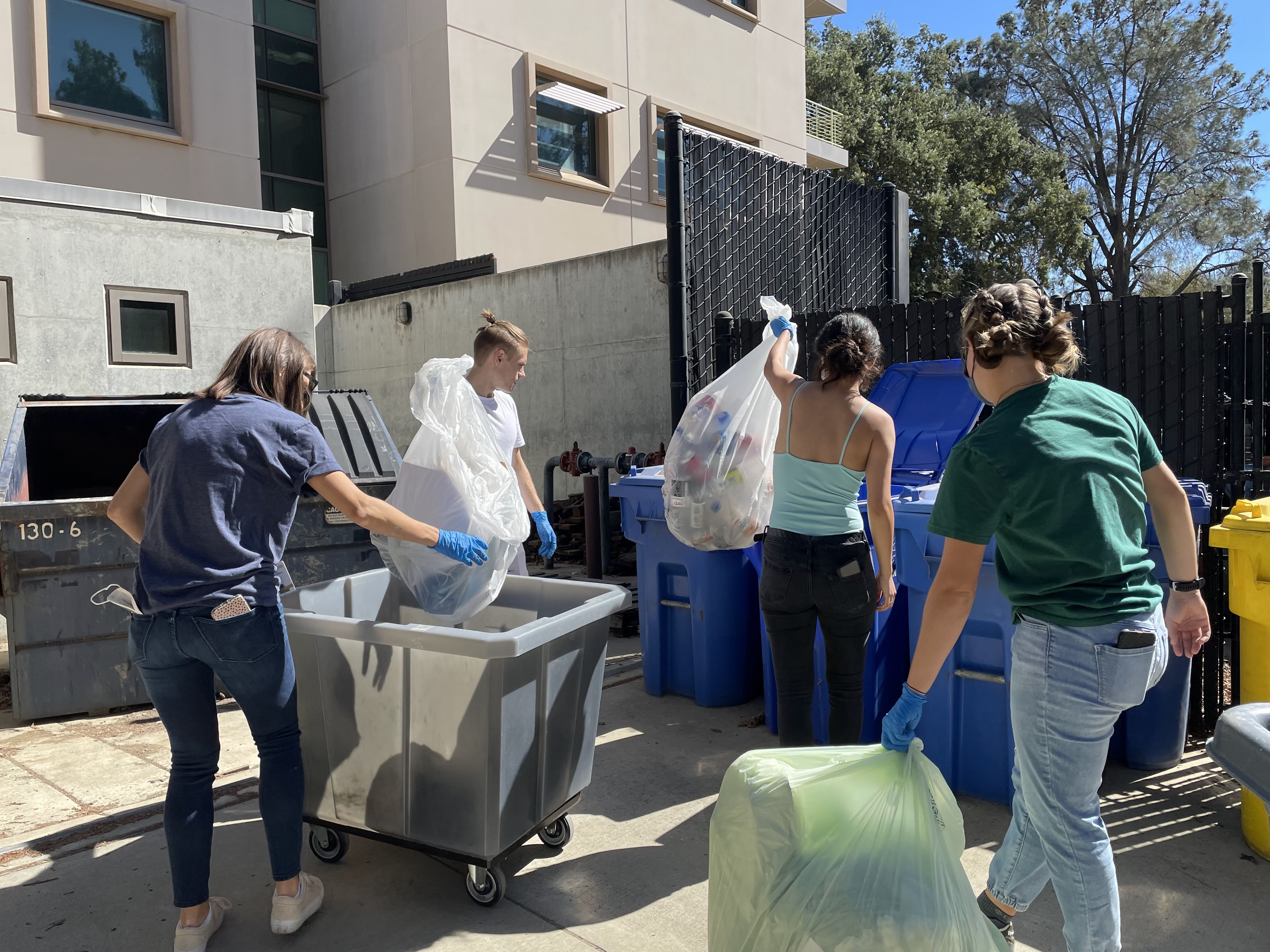
Earth & Physical Sciences is LEED Gold Certified
Quick Summary
- In February 2022, the Earth and Physical Science (EPS) Building earned LEED Gold Certification in the Existing Buildings: Operations & Management category with 75 out of 110 total points.
The Earth & Physical Sciences building is a 92,350-square-foot building with 51 research laboratories and 17 undergraduate teaching classrooms. It also is the home of some amazing petrology (rock) collections. The Green Buildings Team within Facilities Management certifies existing campus buildings under the Leadership in Energy & Environmental Design for Existing Buildings: Operations & Maintenance (LEED EB: OM) certification program.
In 2021, the Green Buildings Team spent roughly three months collecting data to represent building performance within LEED categories. The categories include Sustainable Sites, Alternative Transportation, Energy & Atmosphere, Water Efficiency, Indoor Environmental Quality, Materials & Resources, and Innovation in Operations. The team determined lighting intensity, performed waste audits, categorized room types, assessed airflow requirements, and reviewed occupancy levels. In team spent the next five months analyzing the data and submitting reports to gain certification approval.
“I love processing and analyzing energy data because I get to see what it takes for a building to work behind the scenes.”
- Monet Kunz, Civil & Environmental Engineering Student
The student team had an opportunity to conduct a waste audit to assess how well the occupants of the building do with separating building waste into the correct compost, recycling, and landfill receptacles. 49% of the analyzed waste was correctly diverted by the building occupants. 72% of waste was reduced from building operation products, such as paper, glass, plastics, cardboard, and metals! 100% of the discarded office equipment including desks, tables, chairs and cabinets is recirculated through Aggie Surplus.



Alex Rivas was responsible for a credit that assessed the natural lighting and views of the space for occupants. She found that 68% of the building’s office spaces and conference rooms received pleasant outdoor views. These views improve the productivity of the building occupants. “This type of credit is important to make sure that occupants have an adequate amount of natural light, which benefits the quality of human health and saves on energy usage through reduced indoor lighting.” The LEED certification also recognized the recent implementation of the ECO Mode program, facilitated by Facilities energy engineers. This unique program looks into lab spaces no longer used for lab activities that may have opportunities for energy and comfort improvements.
This LEED certification was made possible by involved and supportive building management and staff within the EPS building. The Green Buildings team relied on building personnel to provide building access and operational information needed for LEED certification efforts. The LEED Gold certification demonstrates that EPS is a sustainable building. Its design features also contribute to energy and water savings while reducing environmental impacts on the building site. EPS Building Manager David Barnes comments, “The landscaping is my favorite sustainable feature of this building. I grew up near the Stanislaus River, and the rocks and plants outside this building remind me of the time spent in my hometown. This building serves as a comfortable second home for faculty and students as much of their time is spent here.”
The LEED certification process considers several parameters, from energy performance to the health and safety of the occupants. Together, these metrics help minimize our carbon footprint and sustain our future.
The Student Team
UC Davis students collaborate to certify existing buildings on campus. These students have a range of backgrounds from studying civil engineering, environmental policy, and environmental science and management. The team spent eight months collecting and analyzing data, evaluating LEED requirements and performing building walkthroughs and waste audits to certify the Earth and Physical Sciences building.
